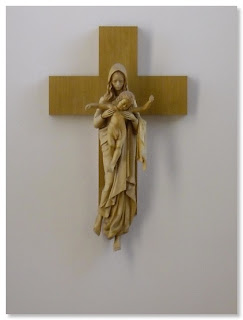The bay of Portitxol is an area well known for the abundance of underwater archaeological remains, where studies have previously found anchors, amphora, ceramics, and artefacts associated with ancient navigation.
In a series of underwater studies, researchers recovered 53 Roman coins from the late Roman period around the 4th and 5th century AD, consisting of coins depicting Valentinian I (3 coins), Valentinian II (7 coins), Theodosius I (15 coins), Arcadius (17 coins), Honorius (10 coins), and an unidentified coin. The team also discovered nails, in addition to deteriorated lead remains which may belong to a sea chest...
There were some interesting articles in the 1948 newspapers, starting with the discovery of some coins by fishermen. The April 10 New York Herald Tribune printed an article entitled "N.J. Fishermen Find Rare Gold Coins in River" and the next day, "Owner of Beach Trying to Stop N.J. Gold Rush." The same event was described in various newspapers for a few days in 1948. The discovery ended up in a conflict described as a "war" between treasure hunters and "beach owners." I don't know the laws concerning beach access or ownership at that time in New Jersey, but it was a dramatic scene that got the attention of the newspapers. The few days later the New York Times wrote, "Jersey Gold Hunt Turns to Comedy as Beach Owners Battle Diggers. All-Day War is Waged, with Bungalow Colony and the Police Making Sallies on Invaders - No Booty Found."
One source said the coins were apparently thrown up on the beach by a dredge clearing a channel in the Shrewsberry River. It says the first coin was found on top of a bank, not in the river as one headline might be taken to suggest.
There have been times when dredged coins were distributed on beaches where they were later found. That happened years ago at the Boca Raton inlet for example. A few years ago, many modern U.S. silver coins were found at Ambersands after it was filled from material coming from the Sebastian River. Those are just two examples.
In cases like that, it is hard to tell how many coins were actually found, since they are found by different people and some, maybe most, are not reported. In some cases, there would be no reason to report them.
In the case of the 1948 finds, at least 35 coins were known found. They coins dated from 1736 to 1768. No wreck or source was mentioned in the reports. The 35 coins included mostly Brazilian 6,400 gold reis coins.
Let that be another little reminder that coins can get dredged up and accidently dumped on a beach.
---
UAPs seemed to defy classical physics, and it seemed to me that quantum physics would better explain some of the phenomena, so I did a search using Quantum Physics and UAPs as search terms, and that led me to the best analysis I've seen on UAPs. While I'm not sure it provides the final answers, and I think there are other possibilities, the site is worth considering. It is lengthy but by far the best analysis I've seen. Take a look.
UAP Theory - Explanation of Unidenfified Aerial Phenomena
One of the big theories of UAP movement, which is explained, is bending the spacetime dimension.
Notice the similarity between my UAP photo and some of those shown in the article. Among other things, it explains the wavey lines that are often seen around many of the UAPs in photos.
---
Today, there are growing prospects that Americans may once again be able to use multiple currencies to conduct commerce. As of the end of 2022, the states of Arizona, Colorado, Missouri, Oklahoma, Utah and Wyoming had adopted laws granting gold and silver legal tender status for payments – assuming the other party to a transaction was willing to accept them. Several more states have adopted such laws thus far in 2023.
If the purchasing power of the dollar continues to decline faster than it did in years past, you may see even more American businesses posting their willingness to accept payments other than in U.S. dollars.
Source: Conducting Commerce Using Multiple Currencies - Numismatic News
---
Bad education had to come before Badenomoics.
---
 |
| Source: nhc.noaa.gov |
Thee is some activity out there but nothing coming our way to rip our beaches.
Good hunting,
TreasureGuide@comcast.net































